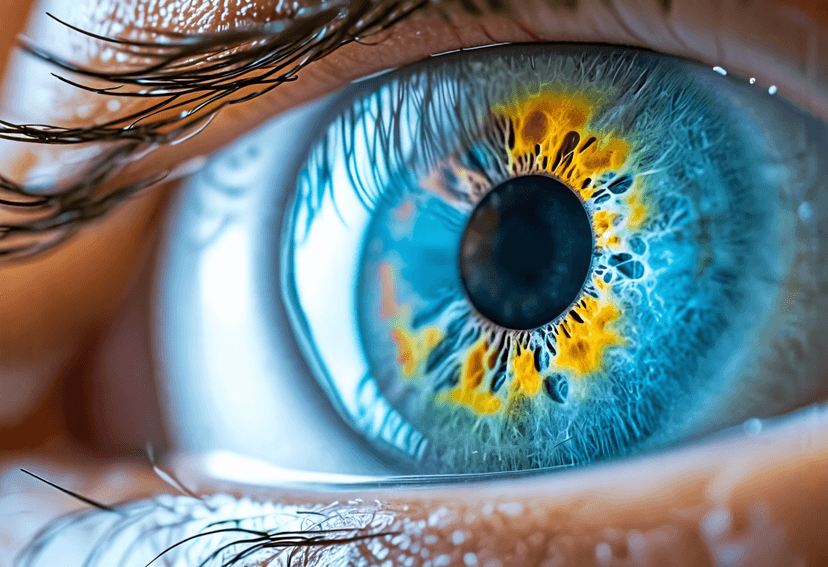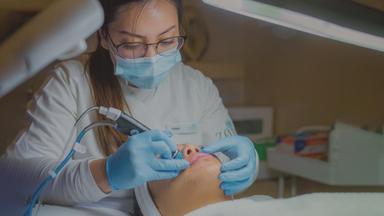
Glaucoma: Causes, Symptoms, and Treatment Options
19 Jun, 2024
Ever had that feeling when you rub your eyes and see little stars? Well, imagine if those stars never went away. That's a bit of what glaucoma can feel like, except much worse and potentially leading to blindness if left untreated. Pretty scary, right? But don't panic just yet. While glaucoma is a serious eye condition, knowing its causes, recognizing its symptoms early, and understanding the available treatments can make a world of difference. So let's dive into the world of glaucoma - it might not be the most exciting topic, but trust me, your eyes will thank you for paying attention!
What is Glaucoma?
Glaucoma is an eye disease that affects the optic nerve, which transmits visual information from the eye to the brain. The health of the optic nerve is essential for good vision. Glaucoma is typically caused by an increase in intraocular pressure (IOP), the pressure within the eye. If not treated, this increased pressure can cause damage to the optic nerve and result in vision loss.
Most popular procedures in India
Types of Glaucoma
1. Open-Angle Glaucoma: This is the most common form of glaucoma. The trabecular meshwork (the eye’s drainage system) appears open, but the fluid passes too slowly through the meshwork, leading to increased eye pressure. Often, there are no symptoms in the early stages. Vision loss progresses slowly and can go unnoticed until it affects central vision.
2. Angle-Closure Glaucoma: This type occurs when the iris bulges forward to narrow or block the drainage angle formed by the cornea and iris, leading to a sudden increase in eye pressure. It can be chronic (develops gradually) or acute (sudden onset). Symptoms can include severe eye pain, nausea, vomiting, blurred vision, halos around lights, and redness in the eye.
Wellness Treatments
Give yourself the time to relax
Lowest Prices Guaranteed!

Lowest Prices Guaranteed!
3. Normal-Tension Glaucoma: Even with normal eye pressure, optic nerve damage can occur due to a sensitive optic nerve or a reduced blood supply to this nerve. Similar to open-angle glaucoma, it can progress without noticeable symptoms.
4. Congenital Glaucoma: This type is present at birth and results from an abnormal development of the eye’s drainage system. Symptoms can include cloudy eyes, excessive tearing, and sensitivity to light.
5. Secondary Glaucoma: This form develops as a result of an injury, inflammation, tumour, or in association with conditions like diabetes or cataracts. Symptoms vary depending on the underlying cause but can include similar symptoms to other types of glaucoma.
Symptoms of Glaucoma
Glaucoma is a group of eye conditions that damage the optic nerve, which is crucial for vision. This damage is often caused by abnormally high pressure in the eye. The symptoms of glaucoma can vary depending on the type and stage of the condition. Here are the detailed symptoms for the different types of glaucoma:
1. Open-Angle Glaucoma
Open-angle glaucoma is the most common type and develops gradually.
Early Symptoms:
- No Symptoms: In the early stages, there are typically no symptoms, which is why it is often called the "silent thief of sight."
- Gradual Loss of Peripheral Vision: Over time, patients may notice a gradual loss of peripheral (side) vision, which can go unnoticed until significant vision is lost.
Advanced Symptoms:
- Tunnel Vision: In the advanced stages, patients might experience tunnel vision, where they can see objects directly in front of them but not to the sides.
2. Angle-Closure Glaucoma
Angle-closure glaucoma can occur suddenly or gradually and is characterized by a rapid increase in intraocular pressure.
Acute Angle-Closure Glaucoma Symptoms:
- Severe Eye Pain: Sudden and intense eye pain is common.
- Headache: Accompanying the eye pain, patients might experience a severe headache.
- Nausea and Vomiting: These symptoms can occur due to the sudden increase in eye pressure.
- Blurred Vision: Vision may become blurry suddenly.
- Halos Around Lights: Seeing halos or rainbow-coloured rings around lights is a frequent symptom.
- Red Eyes: The eyes may appear red and bloodshot.
Chronic Angle-Closure Glaucoma Symptoms:
- Gradual Loss of Peripheral Vision: Similar to open-angle glaucoma, there may be a gradual loss of peripheral vision.
- Intermittent Blurred Vision: Vision may become blurry periodically.
- Halos Around Lights: Seeing halos around lights, particularly in low light conditions.
3. Normal-Tension Glaucoma
Normal-tension glaucoma occurs even when intraocular pressure is within the normal range.
Symptoms:
- Gradual Loss of Peripheral Vision: Similar to open-angle glaucoma, with a slow and unnoticed loss of peripheral vision.
- Tunnel Vision: In advanced stages, tunnel vision may occur.
4. Congenital Glaucoma
This type of glaucoma is present at birth and may be diagnosed in infancy or early childhood.
Symptoms in Infants and Young Children:
- Enlarged Eyes: One or both eyes may appear larger than normal.
- Cloudy Corneas: The clear part of the eye may look cloudy.
- Excessive Tearing: Persistent tearing without obvious irritation or infection.
- Light Sensitivity: The child may show signs of discomfort in bright light (photophobia).
- Irritability: Due to eye discomfort, infants might be unusually irritable.
5. Secondary Glaucoma
Secondary glaucoma results from an underlying condition such as eye injury, inflammation, tumour, or advanced cataract.
Symptoms:
- Symptoms of the Underlying Condition: Depending on the cause, symptoms may include eye pain, redness, or vision changes.
- Gradual or Sudden Vision Changes: This can vary based on the type and progression of the underlying condition.
Early detection of glaucoma is crucial to prevent irreversible vision loss. Regular eye exams, including measurements of intraocular pressure and optic nerve assessment, are essential, especially for those at higher risk (e.g., individuals with a family history of glaucoma, older adults, people with high intraocular pressure, and those of African, Asian, or Hispanic descent).
If you experience any symptoms of glaucoma, it is vital to seek prompt medical attention from an eye care professional. Early treatment can help manage the condition and preserve vision.
Diagnosis
Regular eye exams are crucial for early detection. Comprehensive eye exams may include:
- Tonometry: Measures the intraocular pressure.
- Ophthalmoscopy: Examines the shape and colour of the optic nerve.
- Perimetry: Tests the complete field of vision.
- Gonioscopy: Inspects the drainage angle of the eye.
- Pachymetry: Measures the thickness of the cornea.
Treatment Options for Glaucoma
1. Medications:
b. Beta-Blockers: Eye drops that reduce the production of aqueous humour, thereby lowering IOP. Commonly prescribed beta-blockers include timolol and betaxolol.
c. Alpha-Adrenergic Agonists: These medications both decrease fluid production and increase fluid outflow. Examples include brimonidine and apraclonidine.
d. Carbonic Anhydrase Inhibitors: Available as eye drops (dorzolamide and brinzolamide) or oral tablets (acetazolamide and methazolamide), these medications reduce fluid production in the eye to lower IOP.
2. Laser Therapy:
b. Laser Peripheral Iridotomy (LPI): Used primarily for angle-closure glaucoma to create a small opening in the iris, allowing fluid to flow more freely and reducing IOP.
3. Surgical Procedures:
b. Minimally Invasive Glaucoma Surgery (MIGS): Includes various procedures such as trabecular micro-bypass stents (iStent, Hydrus Microstent) or micro-catheter-based techniques (Trabectome) to enhance aqueous humour outflow.
c. Glaucoma Drainage Devices: Implants like Ahmed valve or Baerveldt implant are used to drain aqueous humour from the eye into a reservoir (plate), which gradually releases the fluid to lower IOP.
4. Lifestyle and Dietary Changes:
b. Healthy Diet: Consuming foods rich in antioxidants (e.g., green leafy vegetables, and fruits) and omega-3 fatty acids (e.g., fish) may support overall eye health.
c. Avoiding Smoking: Smoking increases the risk of developing glaucoma and worsens its progression, so quitting smoking is highly beneficial.
5. Regular Monitoring and Follow-up:
b. Compliance with Treatment: It's crucial to adhere to prescribed medications and attend follow-up appointments as scheduled to effectively manage glaucoma and prevent vision loss.
Each treatment option for glaucoma aims to reduce IOP and preserve vision, with the choice of treatment depending on the type of glaucoma, disease severity, and individual patient factors. A comprehensive approach involving a combination of these therapies is often necessary to achieve optimal outcomes and maintain eye health over time
.
Prevention and Management
While glaucoma cannot be prevented, the risk of developing the disease can be reduced through regular eye exams, especially if you are in a high-risk group (over 60, have a family history of glaucoma, are of African, Asian, or Hispanic descent, have high eye pressure, or are nearsighted).
How can HealthTrip assist with your treatment?
If you're seeking glaucoma treatment, let HealthTrip be your compass. We support you throughout your medical journey with the following:
- Access to top doctors in 38+ countries and the largest health travel platform.
- Partnerships with 1500+ hospitals, including Fortis, Medanta, and more.
- Treatments in neuro, cardiac care, transplants, aesthetics, and wellness.
- Post-treatment care and assistance.
- Teleconsultations with leading doctors at $1/minute.
- Over 61K patients served.
- Access Top treatments and packages, such as Angiograms and many more.
- Gain insights from genuine patient experiences and testimonials.
- Stay updated with our medical blog.
- 24/7 unwavering support, from hospital formalities to travel arrangements or emergencies.
Hear from our satisfied patients
Glaucoma is a serious eye condition that requires early detection and ongoing management to prevent vision loss. Regular eye exams are crucial, especially for those at higher risk. If you experience any symptoms or have concerns about your eye health, consult with an eye care professional promptly.
Most popular wellness packages
Related Blogs

Discover the Future of Healthcare at Yashoda Hospitals Hitec City
Experience world-class medical care at Yashoda Hospitals Hitec City, a

The Impact of Glaucoma on Mental Health
Explore the emotional and psychological impact of glaucoma on individuals

Glaucoma 101: Understanding the Silent Thief of Sight
Learn about the causes, symptoms, and treatment options for glaucoma,

Best Hospitals for Bariatric Surgery in UAE
Thinking about bariatric surgery in the UAE to reclaim your

Minimally Invasive Surgery Options in Thailand
Are you considering Hormone Replacement Therapy (HRT) and wondering about

A Comprehensive Cardiac Care at Fortis Memorial Research Institute (FMRI) Gurgaon, India
Ensuring your heart receives the best care is vital, but











